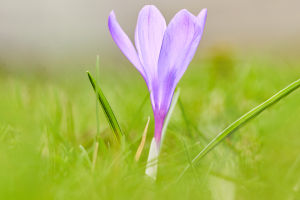Crocus Sativus: Spice Origin
Crocus sativus, commonly known as the saffron crocus, is an extraordinary plant cherished worldwide for producing saffron, one of the most expensive and prized spices.
With origins tracing back to Greece and Southwest Asia, this delicate, flowering plant has been cultivated for centuries, not only for its culinary and medicinal uses but also for its captivating beauty.
Botanical Characteristics
Crocus sativus blooms in the fall, revealing stunning purple petals and vivid orange-red stigmas. Each flower has three slender stigmas, which are harvested to create saffron. The plant's narrow, grass-like leaves and vibrant blooms make it an eye-catching addition to any garden. Crocus sativus thrives in regions with mild climates and well-drained soil. It requires full sunlight exposure and prefers a dry summer period, as excessive moisture can cause the corms to rot.
Saffron: The World’s Costliest Spice
Saffron’s status as the world’s most expensive spice is due to the labor-intensive harvesting process. Each stigma is hand-picked with care, and it takes about 75,000 flowers to produce just one pound of saffron. Because of this meticulous process, saffron can fetch prices of up to $5,000 per kilogram. However, its value goes beyond its cost, offering a unique flavor and color that elevate a wide array of dishes.
Health Benefits of Saffron
The saffron from Crocus sativus is rich in bioactive compounds, including crocin, picrocrocin, and safranal. These potent antioxidants help combat oxidative stress, reduce inflammation, and protect the body’s cells from damage. Saffron has been used in traditional medicine for centuries to promote overall well-being.
Additionally, saffron may have positive effects on eye health. Studies suggest that it can protect against age-related macular degeneration (AMD) and improve vision by preserving photoreceptor cells. Women have also used saffron to alleviate menstrual discomfort, while its soothing properties aid digestion and reduce bloating.
Culinary Uses
Saffron’s culinary applications are diverse, as it imparts a warm, slightly floral, and honey-like flavor to various dishes. Its ability to color foods with a golden-yellow hue adds an element of luxury and visual appeal to meals. Saffron is a key ingredient in many traditional recipes, such as Spanish paella, Italian risotto, Indian biryani, and Persian saffron rice. In desserts, saffron is often paired with flavors like cardamom and rose to create indulgent treats like kulfi and baklava.
Cultivation and Care
Growing Crocus sativus can be rewarding, both for its visual beauty and for the potential to harvest your own saffron. Plant the corms in well-draining soil during late summer or early autumn. They should be placed about four inches deep and spaced a few inches apart to allow for healthy growth. Once planted, ensure the soil remains moist but not soggy.
In colder climates, it’s essential to mulch the corms in winter to protect them from frost. With proper care, Crocus sativus will produce blooms each year, and after the flowers have been harvested, the corms will go dormant until the next growing season.
A Symbol of Luxury and Tradition
Lykkers, Crocus sativus is not only a source of the world’s most luxurious spice but also a symbol of human dedication and tradition. Whether appreciated for its beauty in the garden or the labor involved in producing saffron, this remarkable plant continues to captivate and enrich lives across the globe.
SAFFRON'S dirty little secret!
Video by Green Love


